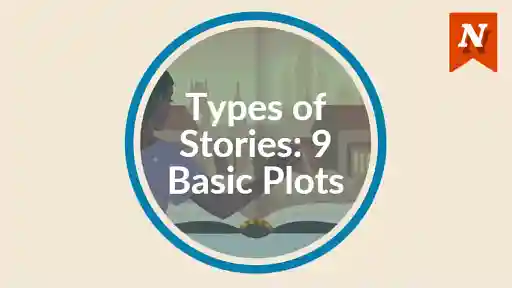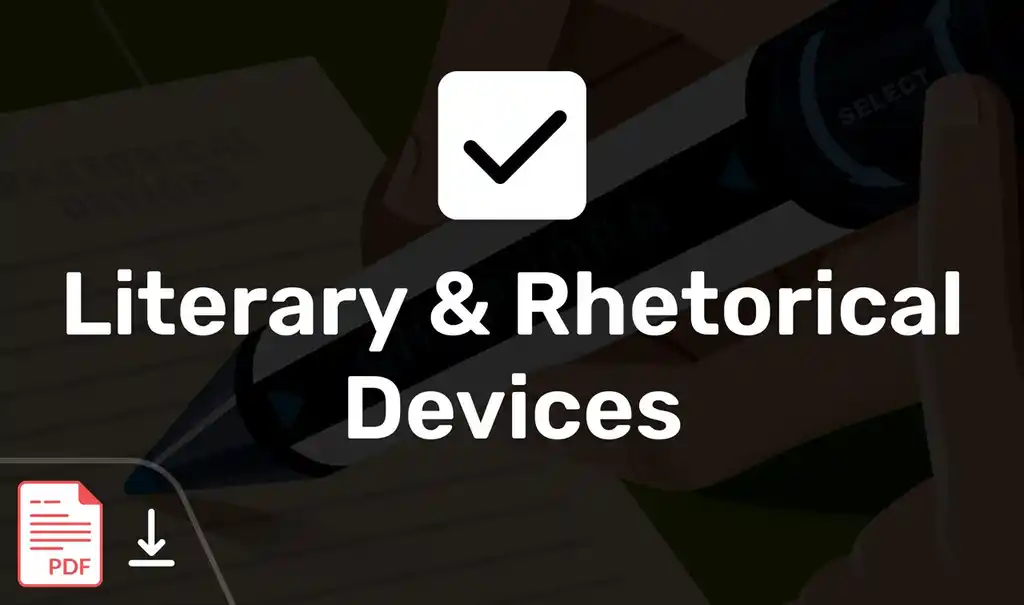Foreshadowing is a warning or indication of a future event — a clue planted in your story that hints at what’s coming. Think of it as a shadow cast by an unseen event, pulling readers deeper into the narrative.
It’s worth noting that foreshadowing can be subtle or explicit; it can hint at gloom and doom or convey joy. When done well, this literary device builds suspense, curiosity, and emotional impact. Below, we’ll look at some of the most striking foreshadowing examples across literature and unpack how they work in service of the story.
1. The Secret History by Donna Tartt
Sometimes the quickest way to build intrigue is through narrator foreshadowing — a partial revelation that tips the storyteller's hand (but only slightly). By giving readers a glimpse of what’s ahead without the full picture, the story plants an irresistible undercurrent of suspense.
For instance, Donna Tartt opens The Secret History with Richard casually hinting at Bunny’s death:
The snow in the mountains was melting and Bunny had been dead for several weeks before we came to understand the gravity of our situation. He'd been dead for ten days before they found him, you know.
Even though this event is in the past, it foreshadows the story to come. As a result, when we first meet Bunny, alive and obnoxious, we can’t help but wonder: when and how will the murder unfold?
💡Takeaway: A narrator who “spills the beans” without giving the whole story teases just enough to keep readers hooked. This drip-feed of information is a hallmark of effective foreshadowing and the key to writing a page-turner.
2. The Virgin Suicides by Jeffrey Eugenides
Narrator foreshadowing through delayed revelation goes one step further: it tells us exactly what happens but, like partial revelation, it withholds the why. Now readers already know the outcome, but they’re compelled to read on to understand the chain of events behind it.
Jeffrey Eugenides uses this technique in The Virgin Suicides:
On the morning the last Lisbon daughter took her turn at suicide — it was Mary this time, and sleeping pills, like Therese, the two paramedics arrived at the house knowing exactly where the knife drawer was, and the gas oven, and the beam in the basement from which it was possible to tie a rope.
Here, the narrator recalls tragic events at the Lisbon household, but (like Tartt) Eugenides delays revealing causes. As we read, we continue to uncover the situation that led to these tragic events.
💡Takeaway: By describing the ending without explaining how it unfolds, Eugenides plants a gnawing sense of inevitability in the reader’s mind. The result is a reader who is left asking urgent questions and dying to get to the bottom of the mystery.
3. Wuthering Heights by Emily Brontë
Sometimes the environment itself does the foreshadowing. Settings can carry emotional weight, echoing a character’s inner life or hinting at conflicts on the horizon. Writers can use setting not only to ground the story, but to echo its emotional undercurrents or signal looming events. In a coming-of-age story, for instance, a crumbling treehouse at the start might subtly set the stage for themes of lost innocence or change, long before the characters themselves articulate them.
Emily Brontë employs this technique masterfully in Wuthering Heights, using the moors themselves as foreshadowing. The moody weather mirrors the turbulent emotions and fates of her characters, setting the tone for intense conflicts that unfold across the novel.
💡Takeaway: When setting pulls double duty as foreshadowing, it becomes more than just background scenery. A storm on the horizon of a bleak moor can silently forecast conflict, passion, or change — all while immersing readers deeper into the atmosphere of the story.

4. The Birds by Daphne Du Maurier
Sometimes even the smallest shifts in the environment can prepare readers for what’s ahead. In Wuthering Heights, the moors act as a vast, brooding presence that reflects and magnifies human conflict. By contrast, Daphne Du Maurier’s The Birds shows how small, seemingly ordinary natural details can carry equal weight as omens, and even become recurring motifs.
The Birds begins with subtle, foreboding environmental cues, such as:
On December the third the wind changed overnight and it was winter.
and
The birds had been more restless than ever this fall of the year. Their agitation more remarked because the days were still.
These details quietly prime the reader for the chaos and menace that will follow, suggesting that nature’s calm won’t hold for long.
💡Takeaway: Where grand landscapes can thunder with foreshadowing, small natural cues are just as effective at building a creeping sense of dread. Effective foreshadowing doesn’t always need to be a spectacle — sometimes the otherwise ordinary signs are the most unnerving.
5. Hamlet by William Shakespeare
Foreshadowing doesn’t have to come from narrators or the environment; it can come straight from a character’s mouth. Dialogue foreshadowing often works through loaded phrases or ominous declarations that hint at the shape of things to come.
For instance, in Shakespeare’s Hamlet, Marcellus warns:
Something is rotten in the state of Denmark.
In just a few words, this dialogue sets the stage for the themes of political instability, corruption, and betrayal that will dominate the story.
💡Takeaway: Dialogue charged with hidden meaning, even if it’s just a short phrase, effectively plants dread in the reader and hints at the wider themes to come. It can implicitly or overtly signal future plot challenges or the story’s atmosphere.
6. The Shining by Stephen King
Not all dialogue foreshadowing comes as ominous proclamations; sometimes it’s the subtext in casual conversation. By loading early exchanges with double meaning, writers can hint at both future events and the deeper traits that will define their characters’ fates.
Stephen King’s classic paranormal horror novel, The Shining, opens with an interview that foreshadows both: character dynamics and looming threats:
“I asked if your wife fully understood what you would be taking on here. And there's your son, of course.” He glanced down at the application in front of him. “Daniel. Your wife isn't a bit intimidated by the idea?”
“Wendy is an extraordinary woman.”
“And your son is also extraordinary?”
Jack smiled, a big wide PR smile. “We like to think so, I suppose. He's quite self-reliant for a five-year-old.”
Jack Torrance, King's central character, is interviewing for a post as winter caretaker at the Overlook Hotel in the Colorado Rockies. The interviewer's questions about Torrance's wife being “intimidated” and his focus on whether they can cope or not foreshadow the menacing, violent events that unfold. The remarks about Danny being “extraordinary” and “self-reliant” also hint at how Danny will resist the supernatural forces of the hotel and ultimately help his mother escape.
💡Takeaway: Dialogue can forecast not just events, but also character arcs. King uses a simple Q&A to build unease and prime the reader for the challenges and tragedy the family will come to face.
7. The Hunger Games by Suzanne Collins
Symbolism
Foreshadowing doesn’t always have to be spoken or symbolic. Sometimes it’s more literal or physical — in objects, sensory cues, or subtle details within a scene. For instance, a hissing oven or a customer wrinkling their nose at an acrid smell might seem trivial, but these cues quietly prime readers for the disaster that awaits a distracted baker who has forgotten to turn off the gas.
A strong example of this type of foreshadowing in literature comes from Suzanne Collins’ The Hunger Games. The mockingjay pin that Katniss receives from Madge initially seems like a simple token of luck, but it actually foreshadows her larger arc. Later, the pin becomes a symbol of rebellion, hinting at Katniss’s eventual role as the Mockingjay and her leadership in the resistance.
💡Takeaway: Physical signs operate by the “show, don’t tell” principle. Remember Chekhov’s gun: if a gun is introduced and emphasized early, it has to play a significant role later. By planting these cues, writers create a sense of anticipation and prompt readers to piece together what might happen next, often without even realizing why they feel that tension.
Name dropping
The Hunger Games also illustrates a different type of foreshadowing: dropping a name, event, or reference and just letting it hang in the narrative. Teasing readers with barely enough detail sparks their curiosity while still keeping them in the dark.
Let's look at when Katniss wakes to an empty side of the bed:
When I wake up, the other side of the bed is cold. My fingers stretch out, seeking Prim’s warmth but finding only the rough canvas cover of the mattress. She must have had bad dreams and climbed in with our mother. Of course, she did. This is the day of the Reaping.
This incident occurs right at the beginning of the story, when the reader does not yet have sufficient context. In just a few lines, the casual mention of the Reaping immediately signals that something significant (and ominous) is about to unfold, without explaining exactly what will happen.
💡Takeaway: By hinting at events through names, occasions, or brief references, writers can create a sense of anticipation. This type of foreshadowing works best when it’s balanced with clear narration in the present moment. A single cryptic reference can draw readers in, but by overloading the story with unexplained allusions, you risk confusing or tiring them.
8. Lord of the Flies by William Golding
Foreshadowing can also unfold through a scene that hints at bigger events yet to come — like a prelude. Early, small-scale versions of future moments can (often subconsciously) prepare readers for the bigger impact later. Consider a story involving a school corridor brawl. If your protagonist hesitates to step in during a minor scuffle earlier, that moment can set the stage for their (perhaps proactive) actions in a more consequential fight later. This parallel adds layers of emotional continuity and tension.
William Golding’s Lord of the Flies illustrates this beautifully. Ralph’s early insistence on maintaining a signal fire seems like a small, controlled scene symbolizing hope and a connection to civilization. But as the story progresses, fire becomes a weapon wielded by Jack’s hunters, representing how human nature can just as easily turn destructive. This miniature scene foreshadows how a single element (fire) will carry dramatically different consequences later.
💡Takeaway: Repetition plus change is the bedrock of storytelling. Employing foreshadowing through miniatures not only hints at future plot developments but also tracks character growth and adds to readers’ understanding of how the events shape characters over time.
Don’t forget that foreshadowing is just one literary device in a writer’s toolkit. Explore this list to discover other literary devices you could use to elevate your storytelling.
Need more guidance on crafting plot, dialogue, or scene structure? Try an online writing course to get detailed, actionable feedback and hands-on practice.












These are tough skills to develop--without crabbing the gag--but well worth it. Thanks for the tips.
Elias Mc Clellan - Almost 8 years ago
Thanks, Elias! I appreciate your taking the time to leave feedback. Thanks for reading.
Bridget At Now Novel - Over 7 years ago